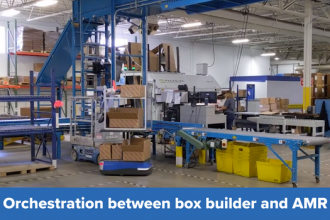Robots in Logistics Pt. 1

Talk of robotics in logistics is everywhere, and for good reason—they can deliver significant value. Autonomous mobile robots (AMRs), automated storage and retrieval systems (ASRS), industrial robots, and automated guided vehicles (AGVs) all can take on significant workload, especially those tasks that human workers dislike. In a severe labor shortage, this in and of itself can deliver a benefit.
But robots also increase efficiency, reduce error rates, and save workers from wear and tear on their bodies. You can add them to picking, sorting, packaging, replenishment, and for transporting packages around the warehouse. In spite of all the benefits of robots, however, they’re only as good as the processes where they are applied. As with all types of technology, deploying good tech at bad problems or non-value added workflows doesn’t make for the best return on investment.
In other words, you must first clean up your house. Before you begin a robotics project, you must analyze your existing manual operations and ensure you’ve optimized them. Only then can you see the true additional value to be gained from your investment in robotics.
To do so may require bringing in a consultant to help comb through your data and current operations, as well as get an understanding of your plans for the future. A consultant can then determine your weak links and identify areas to optimize your existing manual operations. This might include recommendations for leaning out your operations by utilizing a six-sigma tool called value stream mapping.
You’ll also want to identify areas of waste—every operation has them—model your labor, your processes, and identify what you consider your best practices to be. Could you improve on them? More than likely. Maybe an improved manual process is all that’s needed. Consider all these areas and opportunities, wring out all the unnecessary steps, and identify areas for further improvement.
Once you’ve gone through an intense analysis of your manual operations and made the necessary improvements, then you can consider whether or not robots will allow you to optimize even farther. Leaner processes will not only improve current operations but will make it easier to apply any potential automated robotics systems. Automating a well-run manual operation is easier and less costly than trying to automate a chaotic or unstructured process. A well-run manual operation serves as a solid foundation for which successful automation initiatives can be built on in the future.
Speaking of the future, incorporate your strategic plans in charting your robotics journey. Systems should be designed with a plan to accommodate future growth plans a company might have including increased number of shipments or more SKUs in storage. Any planned changes to service levels should be included in any future state review as should potential network changes and your corporate acquisition strategy.
Have a good look at the most repetitive or dangerous tasks in your operations and determine what and how robots can help replace labor in these spots. See where your associates spend the most time in the warehouse and identify the technology that might fit there. When determining your potential ROI, consider the total cost of ownership including cost of equipment, the labor savings including training costs, the potential service level improvements, the availability of labor, ongoing maintenance fees, safety benefits, and the space savings you might achieve. Projects worth investing in will often return benefits in multiple areas besides just labor reduction and these should be taken into consideration when developing an automation strategy.
To help build a positive business case, one other consideration is whether you are designing for peak periods or would be willing to focus on a hybrid solution that requires flexibility during peaks to add labor but allows you to reduce the automation capital budget accordingly. Very often a hybrid system where people and robots work together during peaks will provide the best overall ROI.
Robots will not necessarily eliminate all labor challenges. But when you do add in robotics, it reduces the number of warehouse vacancies that you need to fill and offers potential candidates a better work environment. That’s a big incentive to bring them on board. But if your processes are poorly run or you are not targeting the right problem to solve, robots won’t live up to your expectations.
To learn more about The Robotics Group (TRG): https://www.mhi.org/robotics
To read more about the Buyer’s Journey:
Will Robots Change Your Warehouse Culture?
Making Safety A Priority With Robotics
Robots Make Work Easier For Humans
When Flooring Takes Center Stage In Robotics
How Robotics Can Increase Your Throughput
Sharing Best Practices – Post Implementation
How To Avoid Potential Pitfalls Of Robotics Ownership
Your Guide To Successful Metrics For Automation Implementation
Orchestrating Workflows Within Your Distribution Center
Justifying Robotics In Your Operations
Robotics – The Buyer’s Journey, Part II



